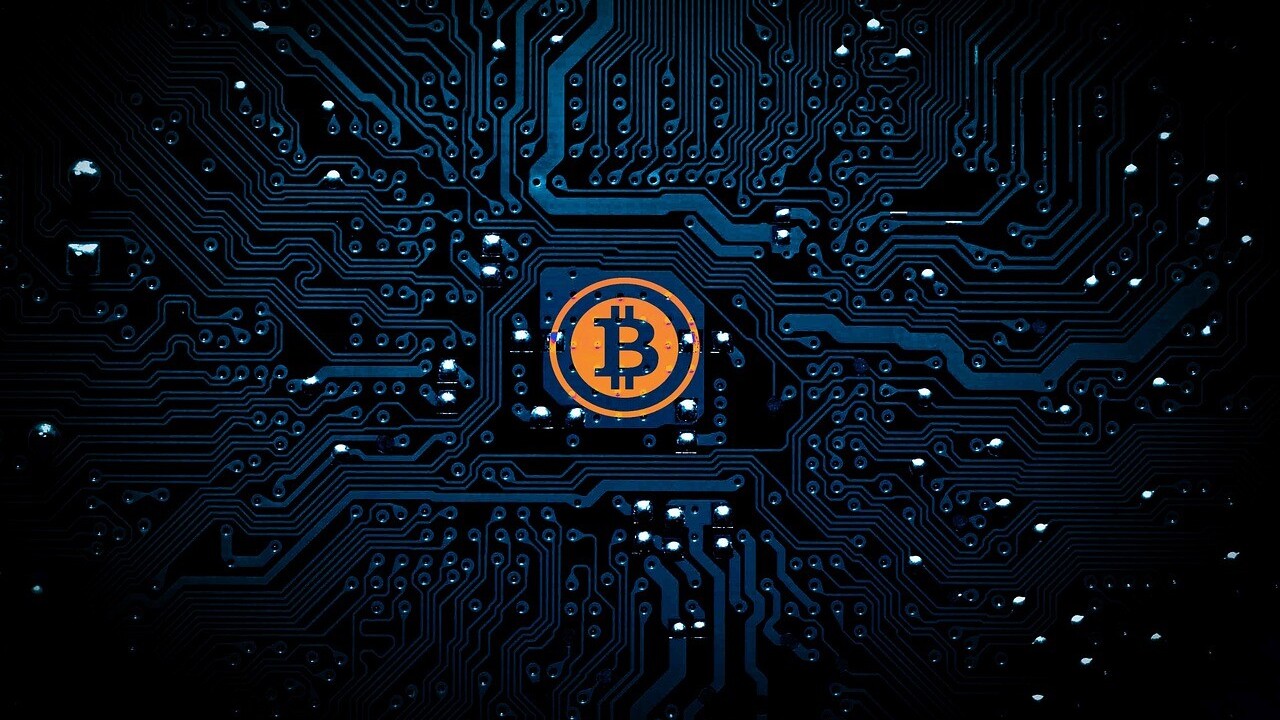
It can be hard sometimes to understand exactly what’s going on with blockchain. Words float on without meaning for beginners who struggle to understand the basics.
This is a glossary of different blockchain terms designed so you can string together different ideas and concepts and participate more fully in blockchain discussions. Each term comes with a resource to consult where you can learn more. The glossary contains content from Flipside Crypto’s guide on the blockchain and cryptocurrency sector.

Blockchain Glossary
Blockchain: The foundational technology behind the blockchain and cryptocurrency sector. It is a virtual, immutable (unchangeable), distributed store of data stored on servers around the world. This is a new way of distributing both trust and data. It is an alternative to traditional systems where a central organization holds all the data.
Think of it as a chain of blocks of data, verified by consensus by any computer that chooses to participate. Each block of data containing anything from who has sent cryptocurrency to others to who owns what plot of land in a land registry.
Blockchain is a distributed ledger.
Resource to read: What is Blockchain Technology? A Step-by-Step Guide For Beginners
Distributed ledger: This is an analogy often made about blockchains. Instead of a centralized bank ledger, blockchains offer the promise of distributing balances throughout a network of computer servers.
You aren’t going to a single bank to store where you send your value — instead, you are going to a decentralized network of peers.
Distributed ledgers aren’t a new concept: the island of Yap used individual tables as early as 500 AD. They yelled at one another whenever they made a new transaction. Blockchains and cryptocurrencies offer the global, virtual network equivalent of that system.
Resource to read: What is a Distributed Ledger? – CoinDesk
Cryptocurrency: A token or currency built on top of blockchain technology. This token helps capture and distribute value from users of the blockchain. You can think of Bitcoin as the first application and cryptocurrency stemming from the blockchain. Cryptocurrencies are a subset of what are known as cryptoassets.
Resource to read: What is Cryptocurrency: Everything You Need To Know [Ultimate Guide]
Cryptocurrency Exchange: Cryptocurrency exchanges are websites or services that let you exchange digital cryptoassets and cryptocurrencies between one another or exchange fiat currencies such as the US dollar for cryptoassets. Two of the most prominent examples of these exchanges are Coinbase and Binance.
Resource to read: 13 Top Best Bitcoin/Cryptocurrency Exchanges (2018 Reviews)
Public/Private Keys: Keys are your way to access crypto balances and to send and receive value or data in cryptocurrency. Your public key is like your email address. It’s what allows other people to send you funds. You can share your public key with the general public.
Services like Etherscan can scan account balances and transactions associated with a public key.
Private keys are the password to your email account. Anybody who holds the private key to a wallet can access and control it and spend any tokens within it.
If you lose your private key or forget it, you’ll lose control of all the crypto assets tied to that private key/public key combination.
Resource to read: Why Do I Need a Public and Private Key on the Blockchain?
Cryptocurrency Wallets: Cryptocurrency wallets are ways of storing your private and public keys to your cryptoassets. A wallet is a safe you can access to then get your keys.
Wallets allow for easier access and backups if you don’t remember your private key with techniques such as the mnemonic seed phrase, a series of 25 random words you have to input to get access to your private key.
There are software wallets and hardware wallets: software wallets store your keys online, while hardware wallets use a physical device such as the Trezor to protect your private key.
Resource to read: Cryptocurrency Wallet Guide: A Step-By-Step Tutorial – Blockgeeks
MultiSig: MultiSig is a permissions system for crypto wallets. The majority of cryptocurrency wallets are single-signature. This means you only need one person’s private key to control the balance within it.
MultiSig means you need more than one private key to spend funds. This allows you to set up an M-of-M scheme. As an example, you might need 5 out of 9 signers to approve of a transaction for it to go through. This is useful for corporate wallets, where many owners and employees have to approve before a transaction is sent.
Platforms like BitGo and Xapo provide MultiSig wallets for their users.
Resource to read: Multisignature – Bitcoin Wiki
Proof-of-work: A system where blocks of transaction data on the blockchain are mined and validated by specialized computers who earn a reward for solving specific math equations.
Resource to read: Proof of work – Bitcoin Wiki
Mining: A practice in proof-of-work systems where computers are dedicated to solving math problems in order to claim the right to mine a block of data and to get an amount of cryptocurrency.
How it works in some more detail: the cryptographic mining piece involves solving cryptographic puzzles. A computer needs to find a nonce to combine with unverified transactions to output a verified string.
Resource to read: A beginner’s guide to cryptocurrency mining – Hacker Noon
Mining pool: A mining pool aggregates computing resources dedicated to mining cryptocurrencies and allocates any of the mined blocks proportionally. In practice, mining cryptocurrencies has some randomness to it, so mining pools serve an essential purpose in keeping volatility down for individual miners.
Resource to read: Mining Pools – Flipside Crypto
Proof-of-stake: Proof-of-stake pushes people who own a selection of a blockchain’s tokens to make decisions on validating the chain. In practice, it’s a much less energy-intensive practice than mining.
Resource to read: Proof-of-stake – Wikipedia
Node: Any computing server around the world can run as a cryptocurrency node, which can store a copy of the blockchain and serve to verify transactions.
Resource to read: What Are Bitcoin Nodes and Why Do We Need Them? – CoinDesk
Hash Rate: A measure of the computing power dedicated to any blockchain by the miners validating transactions and blocks. The higher the hash rate, the more active the chain is and the more appealing it is to miners. It then becomes harder to attack the chain, and infiltrate it with false transactions (known as a 51% attack).
Resource to read: Hash Rate – Flipside Crypto
Decentralization: A measure of how much authority is held by a central holder. You can argue that blockchains are naturally more decentralized than other methods of distributing data because there is (at least in public chains) no gatekeeper on who can join: as long as you have the computing power, you can participate in the blockchain.
Instead of all of your data residing in one central provider (ex: Equifax), it now sits and is processed and verified by a global network of computers.
Decentralization is an ideal of the blockchain community. However, it has not been perfectly achieved.
For example, the mining pools that mine most of Bitcoin are mostly based in China: a consortium of these mining pools might decide to do what is called a 51% attack. They would use their assembled computing power to change the rules of the blockchain and facilitate conditions such as “double spend”: the ability to infinitely spend the same block of cryptocurrencies, essentially creating wealth out of nothing. The control of mining resources is very centralized.
Resource to read: The Meaning of Decentralization
Public vs. Private Chains: There are blockchains open entirely to the public (anybody can participate) such as Bitcoin and Ethereum. There are also private blockchains that have gatekeepers who determine who can join.
Resource to read: Public vs. private blockchain protocols
Interoperability: Blockchains and cryptocurrencies are often isolated with one another, and need to be exchanged in order to be used.
Blockchains like Aion are looking to solve the interoperability piece by making different blockchains and cryptocurrencies interoperable, or compatible with one another: imagine, for example, a world where you can trade Bitcoin and Ethereum seamlessly (without exchanges) and use them interchangeably.
Resource to read: Aion Is Launching a ‘Token Bridge’ to Connect Blockchains – CoinDesk
Atomic Swaps: Atomic swaps involve cryptocurrencies that are tradeable with one another without needing an exchange in the middle. Typically, they have to follow the same encryption standard and have a payment channel protocol such as Lightning Network. With what’s called a hash-time locked smart contract, two individuals can trustlessly trade cryptocurrency pairs with one another: solving the interoperability piece.
Resource to read: What Are Atomic Swaps? | CryptoCompare.com
Hash functions/tables: A more technical and precise description of the underlying technical foundation of how data is shared and stored on a blockchain. Hash tables are a mainstay of computer science.
Resource to read: Cryptographic hash function – Wikipedia
Bitcoin: Bitcoin was created by Satoshi Nakamoto in 2008 as the first application of the blockchain and as the first cryptocurrency. It is still the dominant cryptocurrency now.
Resource to read: Bitcoin: A Peer-to-Peer Electronic Cash System – Bitcoin.org
Fork: There are soft forks, where a cryptocurrency maintains its value and its rules are simply rolled forward and changed in a reversible manner, usually with the assent of the majority of the community.
Hard forks are when a blockchain fails to reach consensus and has to do a hard reset and splits off into two chains. One chain adopts one set of rules and another continues the original set of rules. This is non-reversible. A hard fork is how Bitcoin and Bitcoin Cash split.
Resource to read: Cryptocurrency Forks – Flipside Crypto
SegWit: Segmented Witness (or SegWit) is a soft fork that happened with the Bitcoin blockchain. It solved congestion on the network by increasing the blockchain’s block size limit and splitting blocks of data in two. It separated out the unlocking signature with the scripts that send and receive data with the transactional data.
This allows the network to process more transactions per second. Users don’t have to wait as long for bitcoin transactions.
Resource to read: Segregated Witness, Part 1
Lightning Network: Lightning Network is an off-chain solution that can settle transactions without having to use the underlying blockchain. It opens up bidirectional payment channels between different individuals, allowing Bitcoin to process many more transactions per second.
Payment channels have pre-deposited amounts of crypto placed into them. They allow individuals with channels open between them to transact seamlessly without using the blockchain. Once you get a final balance, it is validated into the blockchain.
This allows for many more payments to be done per second. It also means there is some centralization between large payers.
Resource to read: Lightning Network
Schnorr: A large Bitcoin update brewing as of the time of drafting for this article, Schnorr proposes to give users a new way to generate the private and public keys critical to cryptocurrencies. It replaces the Elliptic Curve technique currently used to generate keys with the Schnorr technique.
This update increases both privacy and security by grouping together MultiSig and regular transactions in the same category, allowing the blockchain process to more transactions and hiding whether or not a transaction is MultiSig or not.
Resource to read: Schnorr Is Looking Poised to Become Bitcoin’s Biggest Change
Ethereum: The blockchain behind the second largest cryptocurrency. Ethereum differentiates itself from Bitcoin by allowing programmers to build on top of the blockchain with a Turing-complete programming language. This allows programmers to build distributed applications.
While Bitcoin can be seen as one application (transfer of value) on the distributed web just like email, Ethereum is a network that allows for many different applications to come to the fore.
The cryptocurrency associated with the Ethereum blockchain is known as Ether.
Resource to read: What is Ethereum? A step-by-step beginners guide
Decentralized Apps (DApps): A decentralized application is a specific type of app that serves a specific purpose within a blockchain network. It must be open-source, autonomous, and it must make changes to the underlying software via consensus from its users. It must store all its data on a public blockchain, which is auditable by the public, and it must generate tokens and be accessible via those same tokens.
DApps seem like regular web applications. Client-side, the same mechanism is in play, but server-side (or the back-end), data and control are distributed among a network of P2P (peer-to-peer) nodes and smart contracts rather than a centralized set of servers and server code.
Resource to read: DApps – Flipside Crypto
Smart Contracts: Smart contracts refer to code that is placed on a blockchain and is then executed on it. The code can be audited by the public. Smart contracts are often regarded as a compliment or a replacement to traditional legal contracts.
A smart contract might algorithmically implement escrow payments without having the need to create a binding legal contract to hold parties accountable.
However, the term is often seen as overly broad as it can mean any block of code placed on the blockchain.
Resource to read: What Are Smart Contracts? A Beginner’s Guide to Smart Contracts
Gas: Gas is used as a transactional cost in the Ethereum blockchain. When you use Ether to access distributed applications, you have to spend a portion of gas associated with it. Gas is correlated with how much computational work your request takes. This ensures that transactional costs are rightly set for the amount of work the system needs to do.
Gas is a way to ensure that nobody tries to attack the Ethereum network by filling it with invalid requests.
Resource to read: What is meant by the term “gas”? – Ethereum
Solidity: Solidity is currently the most popular programming language to write smart contracts on the Ethereum blockchain, based around EMCAScript (the basis of JavaScript).
Resource to read: How To Learn Solidity: The Ultimate Ethereum Coding Tutorial
DAO: DAOs or decentralized autonomous organizations are a collective grouping in which smart contracts make choices. The entire organization is run on the blockchain. Shareholders buy tokens that give them the right to vote on future decisions.
Resource to read: DAO – Flipside Crypto
Casper: Casper is an implementation of the Ethereum blockchain that promises to process more transactions per second. Ethereum used to be able to process 20 transactions a second. Bitcoin could only process 4. Visa and Mastercard can process about 20000 transactions a second. Casper is an in-between step for the Ethereum blockchain to change over from proof-of-work to proof-of-stake. It implements sharding (dividing the main Ethereum chain into smaller subcomponent chains) to provide parallel processing and increased throughput.
Resource to read: Ethereum to Combine Casper and Sharding Upgrades | Cointelegraph
ERC20: A set of standards based on the Ethereum blockchain. ERC20 allows anybody to create a token built on top of Ethereum’s blockchain. It is the basis of the initial coin offering craze and the advent of new “altcoins”.
Resource to read: Beginner’s Guide to ERC-20 Tokens: Digital Assets Built on Ethereum
Altcoins: Altcoins are tokens, cryptocurrencies and cryptoassets outside of Bitcoin and Ethereum. Coinmarketcap gives you a good view of how many there are!
Resource to read: Altcoin Definition | Investopedia
Stablecoins: Stablecoins are cryptoassets pegged to a certain value or asset — for example, you have stablecoins that trade 1:1 with the US dollar. These are collateralized or not with other cryptoassets.
Resource to read: Stablecoins – Flipside Crypto
Initial Coin Offering: Another way to originate tokens for a blockchain. An ICO involves a marketing process, private sale, then a public sale of a newly-listed token, which then aims to be listed on as many cryptocurrency exchanges as possible. Note that there is no standard way of conducting initial coin offerings.
Resource to read: ICO Guides: Introduction – ICO Education | ICO Watch List
Hopefully, this glossary has helped you understand more about the cryptocurrency and blockchain space — and made you feel like you can be a part of the discussion! I’d love any comments if you have any. Also, if you want more content like this — you should check out Flipside Crypto’s guide to blockchain and cryptocurrencies!
Get the TNW newsletter
Get the most important tech news in your inbox each week.




